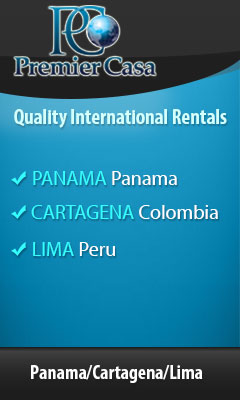Cartagena's Getsemani neighborhood, alive with new transformations and old charms.

As parts of the Getsemani transform, this once dangerous and seedy neighborhood in Colombia's port city of Cartagena still keeps its stubborn, extraordinary charm alive.
A barefoot man sweating bullets from his shirtless back pushes a cart caked in blue peeling paint down a cobbled stone street inside the walled city of Cartagena's old town. The cart's three metal wheels shake and shiver until finally the man stops for a rest to fight against the oppressive heat that so defines Colombia's coast. The barefoot man and his rickety cart, loaded with miscellaneous goods -- often with odd things like bricks, scrap metal, even tangles of yucca root -- are a staple of Cartagena's old town, a relic of the past which has stubbornly remained a constant since colonial times.
     
|
Cartagena's Getsemani neighborhood sits nestled inside the south-east corner of the city's ancient walled fortress, a beautifully preserved colonial district, whose architecture has earned itself a place among UNESCO's list of world heritage sites. Traditionally a gritty, working class neighborhood, it was once recently burdened with a reputation for thieves, prostitutes, and drug dealers. Recently however, the neighbourhood has undergone a resurgence, and such unsavory elements have been pushed to the fringes. What remains is the grittiness of the locals, and the faded grace of the neighbourhood's worn out pastel facades, which still exhude a dilapidated charm into the lives of travelers who wander through. The change has not gone unnoticed by backpackers, many of whom find the neighborhood to be a refreshing change over Cartagena's more touristy neighbourhoods, like Bocagrande.
It's not hard to see why, as Getsemani is a feast for the senses, alive with colour and vitality. On a street corner, beads of sweat fall off the faces and bare backs of two men selling empanadas that are as spicy as the tropical juices sold alongside them are succulent. Their clients, a hungry crowd whose members lounge on a cracked concrete curb across from a worn yellow church, are a mix of Europeans, Americans, Colombians, Australians, Venezuelans and Italians -- these old street vendors don't discriminate.
Beyond strolling the beauty of Getsemani's streets by day, travelers will find the neighborhood's nightlife to be equally vibrant, fuelled by a delicious mix of cocktails and humming with a heady mix of music and dancing. Café Havana (Calle de la Media Luna con Guerrero; 57-310-610-2314; cafehavanacartagena.com) is a Latin jazz café dripping with atmosphere. Live music performances start late, and the place fills up fast, but the mojitos are rumored to be some of the best in the city. Others, like the Bazurto Social Club (Avenida del Centenario Carrera 9,30-42), a place named after a nearby rambunctious market, lets your ears and body feast on traditional cumbia music to Afro-Colombian sounds from the 70s.
While you wait -- nightlife starts late in the Getsemani -- there's no better place to relax than the stone steps that spill out onto the plaza in front of the Parroquia de la Santisima Trinidad church (Carrera 10 with Calle 29). This is where the people of Getsemani come to meet each other, where children play games of pick-up soccer, musicians serenade their lovers with their fast, intoxicating ballads, and lazy grandmothers station themselves on park benches to keep track of the throng.
The next morning, hip joints like Ceiba Juice Bar (Calle Guerrero 29-75; 57-310-660-4114), where fresh tropical juices are hand made and the coffee is reminiscent of tight Italian-style ristretto, will revive you once again. Horacio Perez, Ceiba's owner, is Colombia's only wholesale vendor of Acai berry. You can get wifi with your acai here as well.
Accommodation is easy. Hostels and small hotels are sprinkled along Calle de la Media Luna. Hostels, like Hostal Casa Baluarte (Calle de la Media Luna No. 10-81 Diagonal Iglesia; 57-310-664-2208; ), offer a range of room choices, wifi, and consistent, responsible security. Prices range from $10-20 dollars per night.
As Cartagena gains recognition with events like its annual celebration of literature and arts, Hay Festival , and as Colombia continues to become safer for travelers, Getsemani should become a more attractive destination for those seeking a little more character and wonder in their traveling experience. The increase in popularity will inevitably lead to a certain degree of gentrification, and the regrettable price increases that come with it. However, the precious things that make the Getsemaní what it is, like its ancient, rickety, colored carts, still pushed by men and their brute force – these real-life enchantments - are unlikely to disappear anytime soon.






